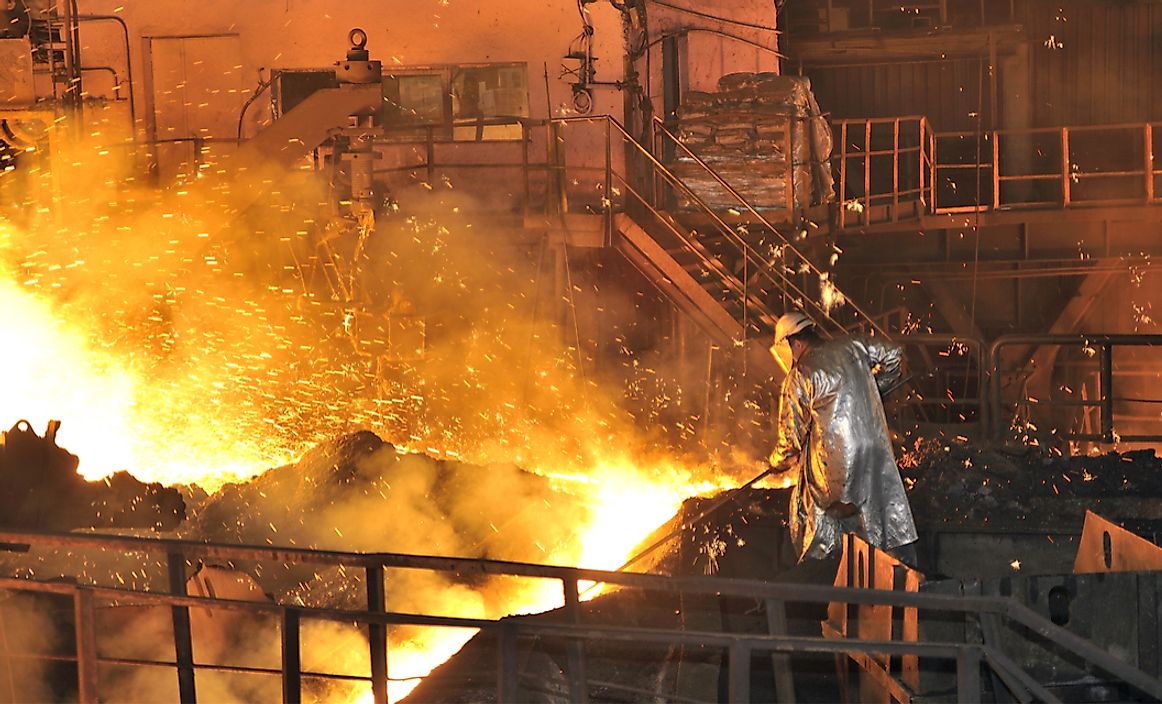The Top Steel Producing Countries in Europe

The Importance of Steel
Steel is an essential component of construction projects around the world due to its strength and low cost. Composed of primarily of iron and carbon, this metal dates back to around 4,000 years ago. The demand for steel increased significantly during the Industrial Revolution of the 1850s, when it was needed for power plants, ships, railways, and mining endeavors. At that time, Britain led the world in steel production. Today, steel is an important part of the world economy, and the global steel supply is primarily produced by Asia (nearly 40%), Europe (37%), and North America (15.5%). This article takes a closer look at the top steel producing countries in Europe.
Top Steel Producing Countries in Europe
European Union
As mentioned, Europe is responsible for 37% of global steel production. Within Europe, members of the European Union are considered the second largest steel producer in the world after China. Together, this organisation produces 11% of the steel in the world or an average annual rate of 177 million tonnes. In 2014, that number had slightly decreased, at 169.3 million tonnes. The European Union has 500 steel production sites spread over 23 member countries. Each site contributes significantly to the economy of Europe, providing the much-needed steel to the automotive, electrical engineering, construction, and mechanical industries. Steel is considered one a key component to achieving the EU's economic goal of increasing industry-sector contributions. Specifically, the EU hopes the industry sector will achieve a 20% contribution to the national gross domestic product (GDP) by 2020.
Russia
Russia leads the world in steel production, producing 71.5 million tonnes as of 2014. In 2007, the production levels of this country were at 72.4 million tonnes, but output decreased significantly in both 2008 and 2009. Beginning in 2010, Russia's annual production rebounded close to 2007 levels. Much of what is produced in Russia stays within the country. Steel ingots make up only 0.64% of its total exports, with a value of around $247 million.
Germany
The second largest steel producer in the world is Germany. In 2014, this country produced 42.9 million tonnes of steel, which is a slight increase over 2012 and 2013 numbers. Like Russia, however, steel production in Germany was at its highest in 2007, when the World Steel Association reported 48.6 million tonnes in production. Germany has a number of steel-containing exports, with steel bars category making up the largest percentage of exports at 1.3% or $1.22 billion.
Turkey
Turkey is the third largest producer of steel in Europe. This country reported progressive production increases over the last 10 years or so. In 2007, it produced around 25.8 million tonnes of steel, and by 2014 that number increased to 34 million tonnes. The highest production year for Turkey was in 2012, however, when it produced 35.9 million tonnes of steel. Turkey has a $17.5 billion export economy. Of these exports, steel bars make up 1.5% of all exported products at a value of $256 million.
The chart published below offers a more in-depth look at steel production in other European countries.
The Top Steel Producing Countries In Europe
| Rank | Country/Region | Crude steel production (million tonnes), 2014 |
|---|---|---|
| 1 | European Union | 169.3 |
| 2 | Russia | 71.5 |
| 3 | Germany | 42.9 |
| 4 | Turkey | 34.0 |
| 5 | Ukraine | 27.2 |
| 6 | Italy | 23.7 |
| 7 | France | 16.1 |
| 8 | Spain | 14.2 |
| 9 | United Kingdom | 12.1 |
| 10 | Poland | 8.6 |
| 11 | Belgium | 7.3 |
| 12 | Austria | 7.9 |
| 13 | Netherlands | 7.0 |
| 14 | Czech Republic | 5.4 |
| 15 | Slovakia | 4.7 |
| 16 | Sweden | 4.5 |
| 17 | Kazakhstan | 3.7 |
| 18 | Romania | 3.2 |
| 19 | Finland | 3.8 |
| 20 | Belarus | 2.5 |
| 21 | Luxembourg | 2.2 |
| 22 | Greece | 1.0 |







